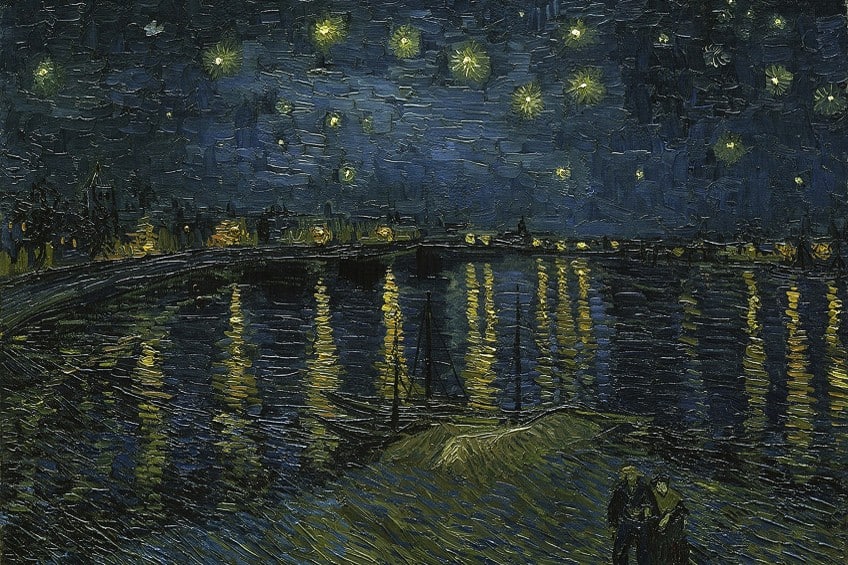What Is Impasto in Art? – Discover the Impasto Technique
You might just enjoy art and painting as a hobby, but if you would love to improve some of your painting skills, it is important to understand the various painting techniques. This means that you need to understand brushwork, tone, color, composition, and texture to enable you to produce a masterpiece of your own with confidence. We will now be considering the impasto technique in further detail.
What Is Impasto in Art?
What does impasto in art mean? The word “Impasto” is derived from the Italian word Impasto, which means mixture, dough, or paste and it is a painting process or technique that revolves around the paste and texture of the paints. The technique involves applying the paint in a very thick consistency by using a knife or a brush. Some artists even use their own hands.
The impasto technique is achieved when you apply paint on the canvas, as thick as possible, in many layers. Frequently, the paint is used directly from the paint tube.
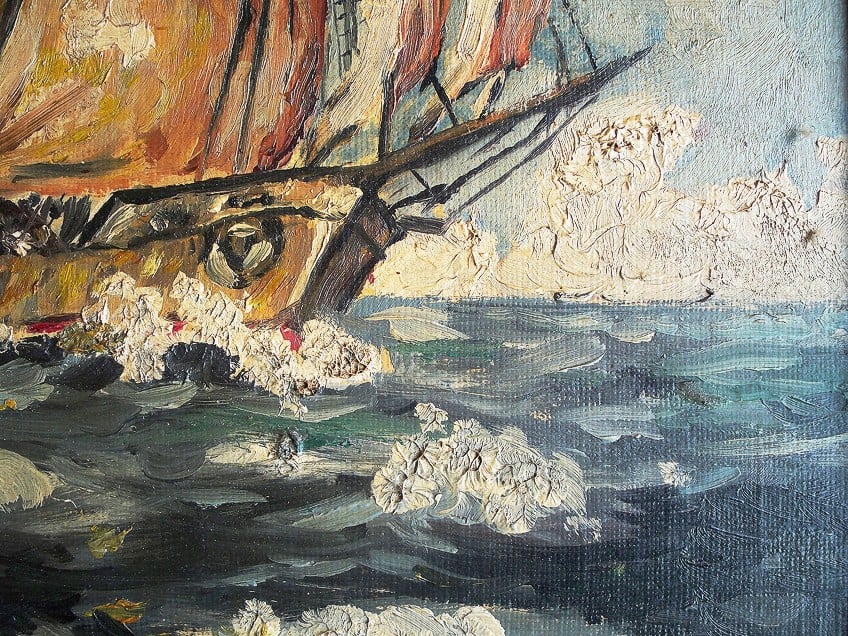
The impasto technique will then produce a three-dimensional effect, almost like a sculptural quality as if the paint is coming out of the canvas. This is the reason why many artists explore this technique in their paintings. Painters and artists that use impasto learn very quickly that the less you handle the paint, the greater the results. If you handle the paint too much, it works the paint into the canvas and produces a duller and flatter effect.
From this information, it is clear that the impasto technique is more than just another painting process, it describes the transformation of the painting that takes place, making it a breathing and living object that will carry the signature of the artist.
History of Impasto Painting
What is impasto in art? The impasto technique is not new to the art world but has been used as early as the 17th century, in the Baroque and Renaissance eras by artists like Rembrandt, Rubens, Frans Hals, Diego Velazquez, and Titian. However, the full potential of this technique only came to light in the Impressionist and Post-Impressionists period, particularly by the artist Claude Monet.
By the time the 19th century came around, the impasto technique was very common and practiced by artists like Vincent van Gogh, who made use of it in almost all of his paintings. His use of brush strokes with a swirling motion, adding thick layers of paint, gave him dimension and expression in his artwork.
One very memorable piece of art is The Starry Night (1889) by Vincent van Gogh, which is an image of the night sky with a very bright moon to the right, which dominates the painting, and the planet Venus in the center to the left. The inspiration for the painting came when he viewed the night sky from his window of the Saint-Paul de Mausole asylum in Saint-Remy, Southern France. He spent twelve months in the asylum, from 1889 to 1990, trying to find reprieve from the mental illness that plagued him. This painting heralded a new way for him to embrace expression, sentiment, mood, and symbols.
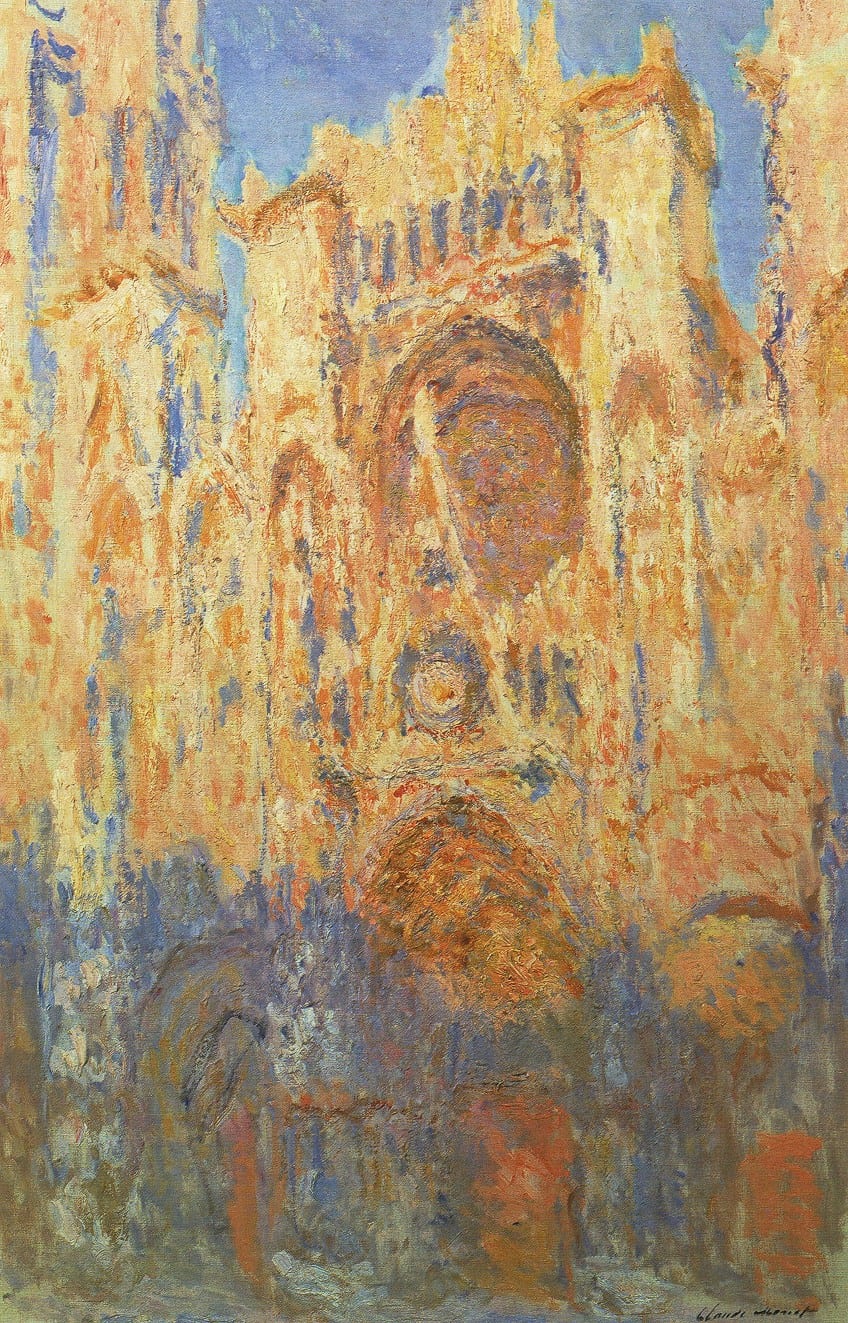
In the 20th century, impasto artists like Willem de Kooning and Jackson Pollock applied the impasto art technique skillfully and expertly, creating some very daring paintings emphasizing the qualities of the paint itself. Pollock worked directly on the floor, associating his action paintings with philosophical, spiritual, and magical ideas. Other modern impasto artists like Frank Auerbach blatantly and brazenly used the impasto art technique in most of his work. Sometimes, even covering the entire wooden support with paint. Some of his paintings are so heavy with layers of paint, making them so heavy that it is virtually impossible to hang them on the wall.
Other artists in this era that used the impasto technique in their artworks are Jean Dubuffet and Leon Kossoff.
All these impasto artists used the impasto technique, particularly with oil paintings, with its thick strokes, to bring life to their subjects by painting the fabrics they wore as well as other elements using the impasto technique. This was particularly effective in the portraits they painted, but was also very effective when painting other aspects like scenery and other types of objects.
Texture and Light Effect of the Impasto Technique
The texture the impasto technique provides gives the effect of energy and movement, which allows some areas of the painting to become prominent and noticeable. By harnessing the impasto texture correctly, the artist can make the painting stand out to all who view it.
With the impasto technique, the effect of the backstrokes causes graduations in the color, this happens when light falls on the paint, creating shadows from the raised paint.
Then, depending on the position of the light and the point at which the viewer is looking at the painting, the effect can shift in very subtle ways. This helps to add depth and heightens the realism of the artwork. The impasto painting process is normally used with oil paints because of their consistency, but acrylic paints can also be used with a similar effect. When using acrylic paints for this process, you can thicken the paint with gel mediums, or when using oil paints, the paint can be thickened with wax.
Famous Paintings and Artists Using the Impasto Technique
The impasto technique fulfills and performs several purposes in the painting, one being the reflection of light on the layers of paint. This can be shown in the folds of their subject’s clothing and in their jewelry as well. This was accomplished by artists like Rembrandt, Vermeer, and Titian in the Renaissance period. Another purpose was that the technique added expression to the painting, this was achieved by the French Impressionists who created paintings with rich impasto textures that show the action of the painting itself.
This was achieved by artists like Vincent Van Gogh, who made extensive use of the technique, as well as Hans Hofmann, Claude Monet, and Willem de Kooning.
In more recent times, artists used much heavier impasto, whereby the paint was applied very thickly, producing paintings that had an almost three-dimensional effect. This form of impasto technique was mastered by Frank Auerbach. Let us now consider some famous paintings and artists in more detail below.
Self-Portrait (1659) by Rembrandt Van Rijn
| Date Completed | 1659 |
| Medium | Oil paint on canvas |
| Dimensions (cm) | 84 x 66 |
| Gallery | National Gallery of Art, Washington D.C., United States |
| Place of Origin | Sint Antoniesbreestraat, Amsterdam, Netherlands |
This famous painting called Self-Portrait (1659) was painted by Rembrandt Van Rijn when he suffered financial ruin after many years of success. All his possessions had been auctioned to pay the creditors. The deep-set eyes express wisdom that he gained after many years of practice.
This painting clearly shows the impasto technique that he used with thick brush strokes.

These are very visible in all his facial expressions, giving the painting a weathered look and showing his concern in the wrinkles on the brow and cheeks. The painting was covered with a thick layer of varnish to protect it, but in 1992 the varnish was removed, bringing out the rich pinks and other flesh tones of his face.
Rouen Cathedral (1894) by Claude Monet
| Date Completed | 1984 |
| Medium | Oil paint on canvas |
| Dimensions (cm) | 100 x 66 |
| Gallery | Musée d’Orsay, Paris, France |
| Place of Origin | Rouen, Normandy, France |
In the Impressionist period, the famous artist Claude Monet painted the Rouen Cathedral (1894). He rented a room across from the Cathedral as a temporary studio, as he was very impressed to see how the light imparted different characteristics at different times during the day.
The effect the changing light had on his subjects was very important to him.
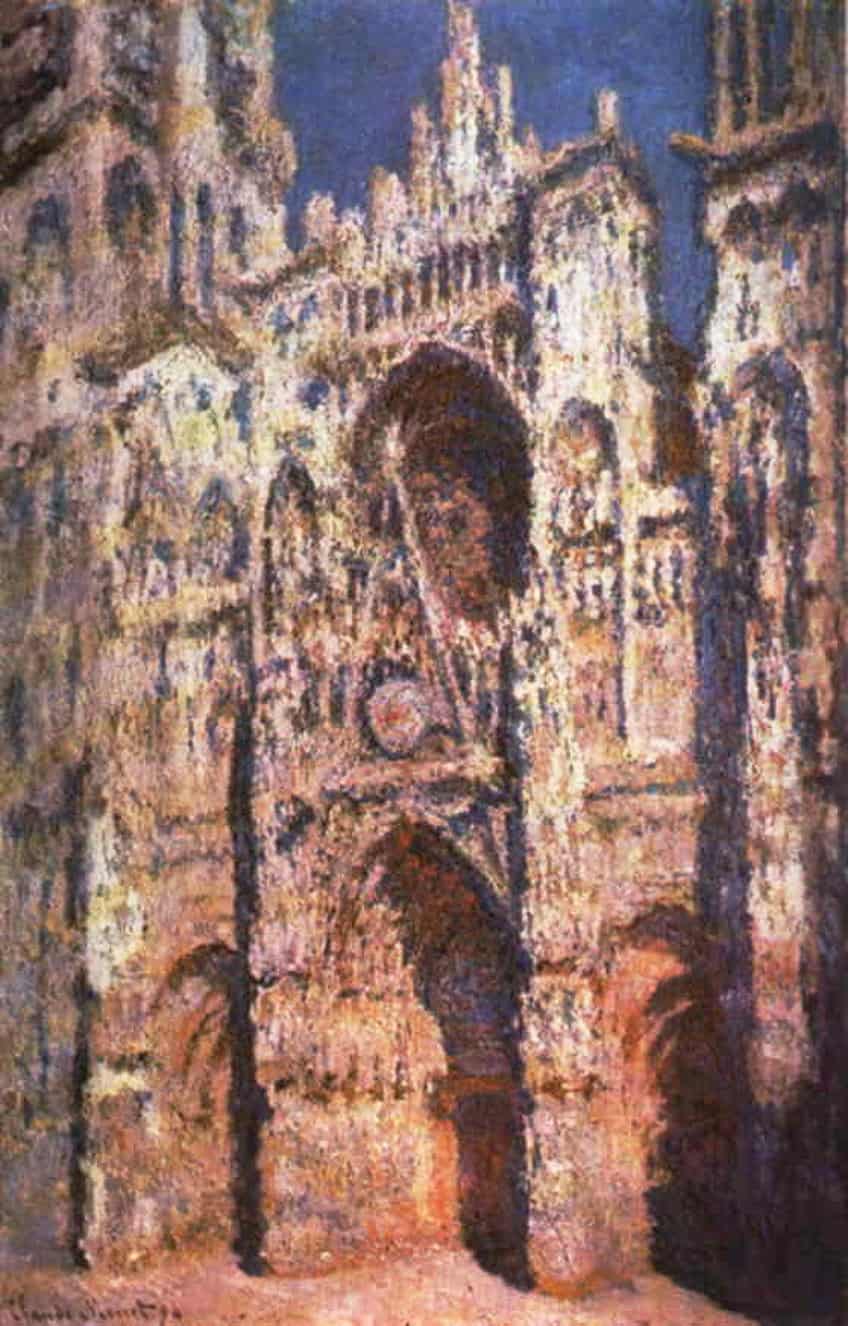
So, he painted the Cathedral using the impasto technique by applying layer upon layer of paint. He then noticed the effect the light and shadows imparted. He noticed a different characteristic of the subject he was painting at different times during the day, giving the subject an almost architectural look.
Head of E.O.W. (1960) by Frank Auerbach
| Date Completed | 1960 |
| Medium | Oil paint on wood |
| Dimensions (cm) | 60 x 57 |
| Gallery | National Gallery of British Art, London, United Kingdom |
| Place of Origin | Camden Town Studio, Northwest London |
Frank Auerbach, a more modern artist, painted the Head of E.O.W. (1960), making use of the impasto technique. There was no doubt about the use of the impasto technique with this painting as the paint was so thick that it formed gobs of paint on the canvas. The paint even covered the wooden support that was holding it, this is truly impasto at its very extreme.
Auerbach used colors for the painting that do not usually work well together, trying to show just what he felt was important and not keeping to the rules.
He made use of lots of maroons, ochre, brown, and even some light blue to enhance his subjects’ features. It may be difficult at first to see what he painted, but you can see the outline and form of a man’s face on the right side of the painting. This effect of the impasto technique shows just how impasto can become a painter’s type of sculpture.
Lenape and Unami (2015) by Donald Martiny
| Date Completed | 2015 |
| Medium | Own pigment and polymer mix on aluminum |
| Dimensions (cm) | Lenape – 305 x 457, and Unami – 366 x 366 |
| Gallery | One World Trade Center, New York City, United States |
| Place of Origin | One World Trade Center, New York City |
The two paintings Lenape and Unami (2015) painted by the American artist Donald Martiny, are housed in the One World Trade Center in Lower Manhattan, New York. After the twin towers tragic event in September 2001, this building was erected in its place. These two abstract impasto paintings carry a very symbolic meaning for the American people as the Lenape painting bears reference to the native tribe that originally occupied the space where the tower is built. The Unami painting bears reference to the language that was spoken by these people.
These two impasto paintings represent the symbolism of independence and freedom to all Americans.
How to Create an Impasto Painting
Maybe you would like to create an impasto painting, but do not know how to go about the process. The first step you need to consider is what type of supplies and equipment you will require for your project. You need to make sure that you have all the supplies you need close at hand and ready for you to use.
Paint Mediums
Oil paint is the natural choice of medium as it has a stiff and thick consistency. However, acrylic paints can also be used, but with additives. Both types of paint still need to have a thickening medium, which will give the acrylic paint a thicker consistency and will also allow the oil paint to dry faster.
The thickening medium helps to add volume to the paint and allows you to maintain your brushstrokes.
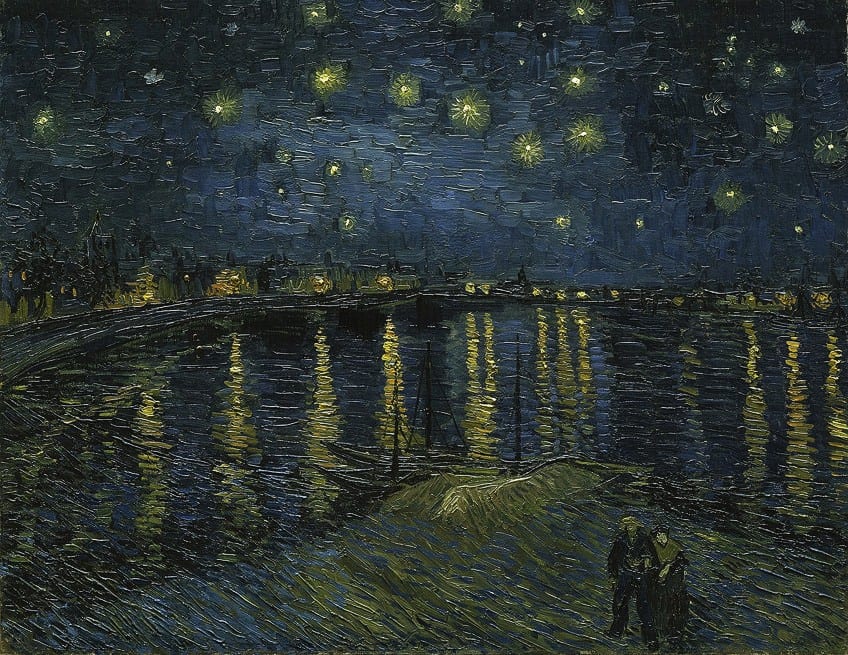
When using acrylic paint, you do not have to be concerned about the drying time as acrylic paint is automatically a fast-drying paint. However, you need to use an acrylic thickening medium to make the paint thicker to create an impasto effect. For oil paints, you need to use a wax medium that will give you a thick matte look, and for this purpose, cold beeswax is the answer. When mixed with the oil paint, it will remain in the position on the surface of the canvas just where you place it.
Using an Applicator
For the impasto technique, you have several applicators available to apply the paint onto the canvas. The first option is a brush, just ensure you use a stiff bristle brush that is made from hog hair, or even a synthetic hog brush. Then there is the palette knife, which is an ideal tool to use to build up thick paint layers for the desired impasto texture.
The palette knives come in various shapes and sizes that will help to create the impasto effect.
There are also wedges and catalyst blades that are somewhere between the palette knife and the brush. These are uniquely made for use in the impasto technique. They are made from silicone and are very flexible and stiff, making them easier to use than a palette knife.
Creating Your Impasto Painting
First, you should select a subject. Is it going to be a living being, a scenic view, a photograph, or a picture? You do not have to paint precisely what you see, but try to bring some element to the fore, or change the colors. Next, you need to consider the composition and how everything is going to work together. Try to focus on the effects of the light and how you perceive the colors you are planning to use.
Next, try to feel through the colors and texture, as the atmosphere created is a key factor. Remember, it is your painting as you see it.
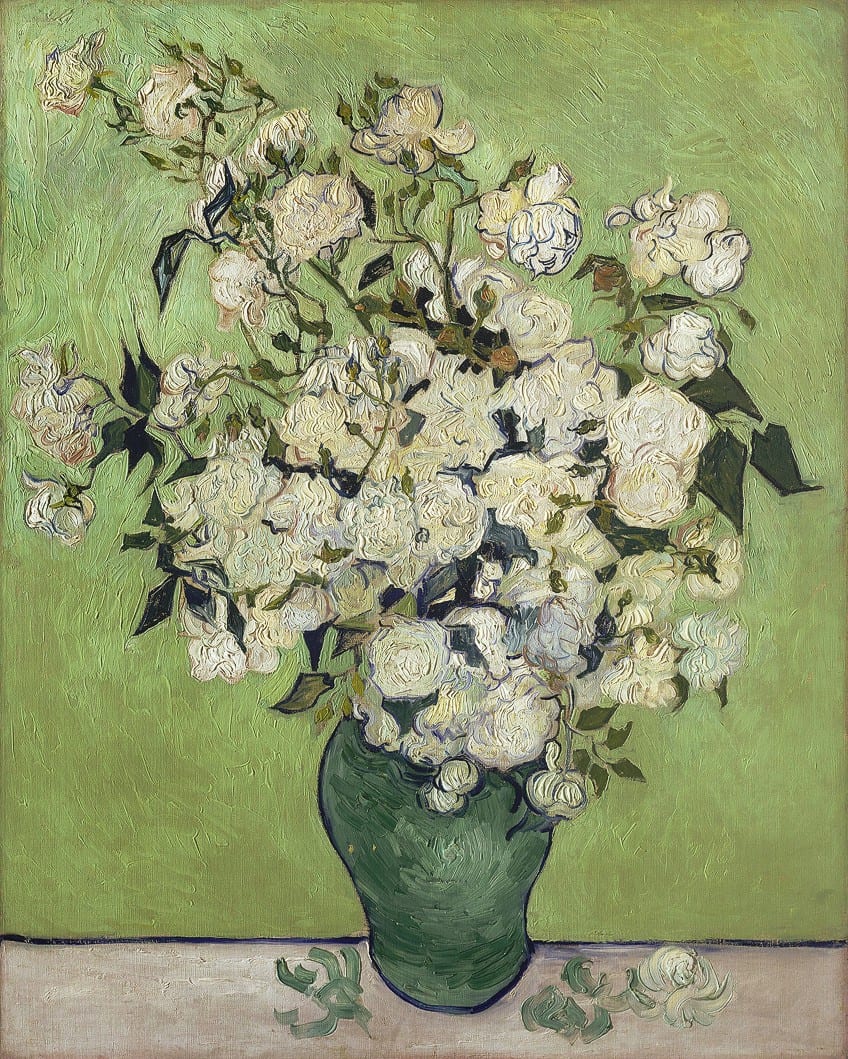
Try to arrange the elements in such a way that they will create interest, and consider how you can combine colors, shapes, textures, and tones to create light, perspective, and depth. However, if you are still unclear, it is a good idea to take a sketchbook and draw a plan of how you want to arrange the various elements. You have now come to the stage where you can begin your painting by thickly layering the paint and allowing it to dry before you continue. Always remember that the paint needs to be layered with thick paint over the thin, to give you your impasto effect. Experiment as you go along by using both the palette knife and the brush to create the illusion of depth, bringing a different dimension to your paintings.
What is impasto in art? From all the information we have been over, it is very clear that impasto art is not just another painting technique, but a means for an artist to express deep emotions. The impasto art technique also serves to highlight the shifting differences between light and darkness, where the paint itself makes all the difference.
Frequently Asked Questions
What Paint Is Best to Use for Impasto Painting?
Traditionally, the medium to use for impasto painting is oil paint, because of its thick consistency and slow drying time. However, you can also use acrylic paint, but you will then have to make use of a heavy-body acrylic thickener or gel.
How Do You Apply the Impasto Technique?
You usually start in a general area of your painting and then move to the more detailed areas. You can smear the paint onto the canvas using a paintbrush, a palette knife, or even your own hands and fingers. Mix the paint on your palette and use your knife or brush to apply it. You can also simply spread the paint onto the canvas from the tube.
How Can You Prevent Paint Colors from Muddying?
When you apply wet paint on top of wet paint, you can end up with a muddy color mixture. So, to avoid this, you need to apply the paint only once. You must understand the shape your application tool will make and how hard you need to press to get the desired thickness of the paint. This should be done quickly, and in one controlled movement.
Megan is a writer and researcher who holds a degree in Social Sciences, with a specialization in Psychology and Environmental Science, from the University of Cape Town. Her dedication to acquiring knowledge and making a positive impact has driven her current work in promoting conscious and sustainable growth in Southern Africa. Megan’s interests encompass exploring the physical and psychological impacts of color in our environment on our mood and well-being. She is also passionate about the role of art and creativity, which has been an integral part of society since the beginning of human history. Since 2022, Megan has been contributing blog posts on painting and color theory at artfilemagazine.
Learn more about Megan van Schoor and about us.
Cite this Article
Megan, van Schoor, “What Is Impasto in Art? – Discover the Impasto Technique.” artfilemagazine – Your Online Art Source. July 10, 2023. URL: https://artfilemagazine.com/what-is-impasto-in-art/
van Schoor, M. (2023, 10 July). What Is Impasto in Art? – Discover the Impasto Technique. artfilemagazine – Your Online Art Source. https://artfilemagazine.com/what-is-impasto-in-art/
van Schoor, Megan. “What Is Impasto in Art? – Discover the Impasto Technique.” artfilemagazine – Your Online Art Source, July 10, 2023. https://artfilemagazine.com/what-is-impasto-in-art/.


